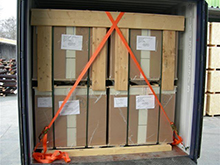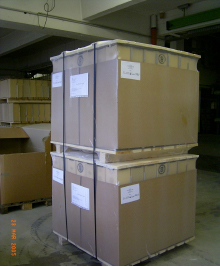
Monolith Handling and Storage Precautions
Handling

- These ceramic monoliths are very heavy. Each skid will have approximately 2000 lbs. and for transportation stability purposes most skids will be banded together one on top of another.
- Ceramics by nature have extremely high compression strengths, therefore stacking heights are limited by local regulations. Lexco suggests no more than 4 skids high. On the other hand, ceramics can be very brittle. Avoid piercing any pallet with tow motor forks, backing into skids with vehicles, or dropping material.
- Monolith can have extremely sharp edges and gloves should be worn while handling.

Storage
Storage indoors in a dry, environmentally controlled, facility is the preferred method of storage for all
types of media.
If that option is unavailable and an outdoor space must be utilized, Lexco suggests several
types of precautions be taken under consideration
1. Our media, blocks and saddles alike, should be protected from freezing.
2. Rainwater will deteriorate packaging causing weakness or failure and creates wet cardboard making unpacking more difficult.
3. Protect from sunlight as packages are not UV protected.
• Heat shrink packaging for monolith could deteriorate allowing blocks to shift or fall
during lifting or transport.
• Polymeric bulk bags could fail when lifting causing a hazard to any nearby personnel and
will severely damage material.
• Significant UV damage occurs in little as one weeks’ time when left unprotected.
4. Do not remove products from pallets.
5. All products should be placed on pavement as soft ground could cause heavy pallets to shift or
sink.
6. Avoid stacking materials, particularly Polymeric bulk bags, as material below could be crushed.
Pallet weights can exceed one ton each.
